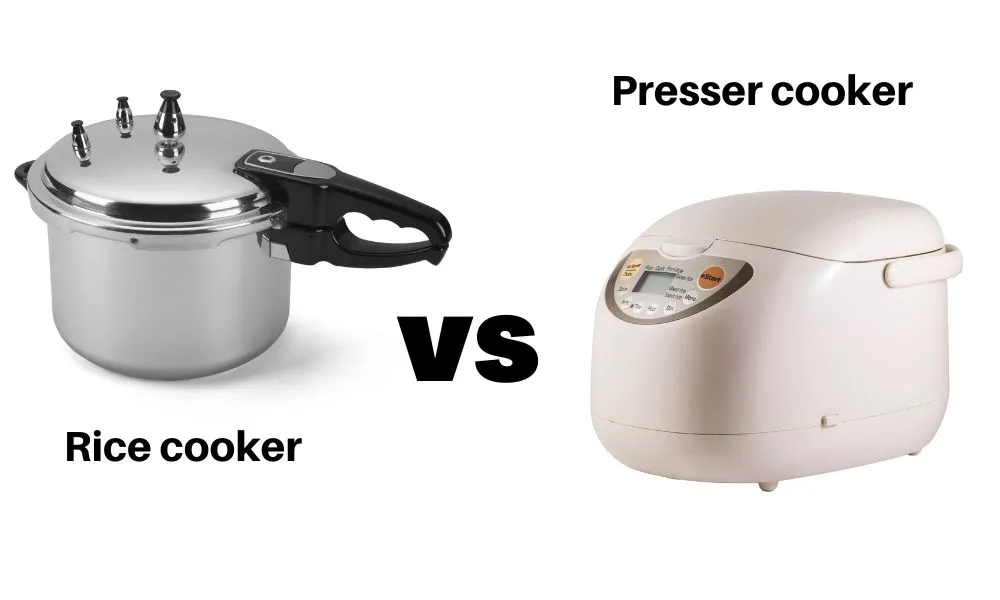In today’s fast-paced world, efficiency and convenience are key factors in our daily routines. Use a Portable Dishwasher can make our life easier. One area where this holds true is in household chores, specifically when it comes to dishwashing. Traditional dishwashers have long been a staple in modern kitchens, but what about those living in smaller spaces or renting apartments without built-in dishwashers? That’s where portable dishwashers come to the rescue. In this article, we will guide you through the process of using a portable dishwasher, ensuring that you can enjoy the benefits of automated dishwashing even without a permanent installation.
Portable dishwashers are compact, freestanding units that offer the convenience of a dishwasher without the need for a built-in installation. They are designed to fit seamlessly into smaller kitchens or spaces where permanent fixtures are not an option. The primary advantage of using a portable dishwasher is the time and effort it saves compared to manual dishwashing. With the right knowledge and a few simple steps, you can make the most of your portable dishwasher and enjoy clean dishes with minimal effort.
Table of Content
- How to Use a Portable Dishwasher
- Setting up the Portable Dishwasher – Use a Portable Dishwasher
- Loading the Dishwasher – Use a Portable Dishwasher
- Adding Detergent and Rinse Aid – Use a Portable Dishwasher
- Selecting the Wash Cycle and Options – Use a Portable Dishwasher
- Starting the Dishwasher – Use a Portable Dishwasher
- Maintenance and Cleaning – Use a Portable Dishwasher
- Unloading and Storing Clean Dishes – Use a Portable Dishwasher
- Tips for Efficient Dishwashing – Use a Portable Dishwasher
- Troubleshooting Common Issues – Use a Portable Dishwasher
- People also ask for:
- Conclusion
- FAQs (Frequently Asked Questions) about How to Use a Portable Dishwasher
How to Use a Portable Dishwasher
Setting up the Portable Dishwasher – Use a Portable Dishwasher
Before diving into the dishwashing process, it’s essential to set up your portable dishwasher properly. Follow these steps to ensure a smooth start:
1. Choosing the right location
Select a suitable location near a sink, preferably one with a countertop extension or a sturdy surface to hold the dishwasher securely. Ensure that there is easy access to a power outlet and the water supply.
2. Connecting the water supply
Connect the dishwasher’s water inlet hose to the kitchen faucet using the provided adapter. Ensure the connection is secure and leak-free. Some portable dishwashers may require a separate connection to the sink drain, while others may have a built-in pump for drainage.
3. Plugging in the power source
Plug the dishwasher’s power cord into a grounded electrical outlet. Ensure the outlet is compatible with the dishwasher’s power requirements and can handle the load.
Loading the Dishwasher – Use a Portable Dishwasher
Properly loading the dishwasher is crucial for efficient and effective cleaning. Follow these steps to load your portable dishwasher correctly:
1. Sorting and prepping dishes
Sort the dishes, separating them into different categories such as plates, bowls, glasses, and silverware. Remove any leftover food particles from the dishes, as excessive residue can hinder the cleaning process.
2. Loading the lower rack
Start by loading the larger and more durable items, such as plates, bowls, and pots, onto the lower rack. Ensure that the dishes are spaced out to allow water and detergent to reach all surfaces.
3. Loading the upper rack
Place smaller and more delicate items, such as glasses, mugs, and plastic containers, on the upper rack. Use the provided prongs and supports to secure the items and prevent them from moving during the wash cycle.
4. Loading silverware and small items
Arrange silverware in the designated utensil basket or rack, ensuring that each piece is separated for better cleaning. For small items like lids or baby bottle accessories, consider placing them in a dishwasher-safe container or mesh bag to prevent them from being displaced.
Adding Detergent and Rinse Aid – Use a Portable Dishwasher
The choice of detergent and proper usage of the rinse aid can significantly impact the cleaning performance of your portable dishwasher. Consider the following guidelines:
1. Types of dishwasher detergents
There are various dishwasher detergents available on the market, including powders, gels, and tablets. Choose a detergent that is compatible with your dishwasher and suitable for the water hardness in your area.
2. Proper detergent measurement
Refer to the dishwasher’s user manual to determine the appropriate amount of detergent required for each wash cycle. Overdosing detergent can lead to residue buildup, while underdosing may result in inadequate cleaning.
3. Benefits of using rinse aid
Rinse aid helps to prevent water spots and aid in the drying process, ensuring that your dishes come out spotless. Fill the rinse aid dispenser in your dishwasher according to the manufacturer’s instructions for optimal results.
Selecting the Wash Cycle and Options – Use a Portable Dishwasher
Portable dishwashers offer a variety of wash cycle options to cater to different needs. Familiarize yourself with these options to customize your dishwashing experience:
1. Overview of wash cycle options
Most portable dishwashers provide standard wash cycles such as normal, heavy, light, and eco-friendly. Each cycle varies in intensity, duration, and water usage. Select the cycle that best suits your load and desired cleaning level.
2. Adjusting water temperature and pressure
Some dishwashers allow you to adjust the water temperature and pressure based on the level of soil or the type of dishes being washed. Follow the manufacturer’s instructions to make these adjustments if needed.
3. Additional features and options
Certain dishwashers offer additional features like sanitize mode, delay start, or half-load option. Explore these options to optimize your dishwashing experience and save energy or water when necessary.
Starting the Dishwasher – Use a Portable Dishwasher
Now that you have loaded your dishwasher and selected the desired settings, it’s time to start the wash cycle. Follow these steps:
1. Closing the dishwasher door
Ensure that all items are properly positioned inside the dishwasher, with no obstructions preventing the door from closing fully. Close the dishwasher door securely until you hear a click or latch.
2. Selecting the desired settings
Turn the dishwasher on by pressing the power button or selecting the appropriate wash cycle. If necessary, make any adjustments to temperature, pressure, or additional options based on your preferences.
3. Initiating the wash cycle
Once you have confirmed all settings, press the start button or initiate the wash cycle as instructed by your dishwasher’s user manual. The dishwasher will begin the cleaning process and progress through the selected cycle.
Maintenance and Cleaning – Use a Portable Dishwasher
To keep your portable dishwasher functioning optimally, regular maintenance and cleaning are necessary. Follow these steps:
1. Regular cleaning of the dishwasher
Periodically wipe down the interior and exterior surfaces of the dishwasher using a damp cloth or sponge. Pay special attention to the door gasket and edges where residue or food particles may accumulate.
2. Removing and cleaning the filters
Portable dishwashers often have filters that trap food particles and prevent them from clogging the dishwasher’s components. Consult your dishwasher’s manual for instructions on how to remove and clean these filters regularly.
3. Descaling the dishwasher
If you live in an area with hard water, mineral deposits may accumulate over time. Use a dishwasher descaler or a vinegar solution to remove these deposits and ensure the optimal performance of your dishwasher.
Unloading and Storing Clean Dishes – Use a Portable Dishwasher
Once the wash cycle is complete, it’s important to handle and store your clean dishes properly. Follow these steps:
1. Allowing dishes to dry
Allow your dishes to air dry inside the dishwasher for some time before unloading them. This helps to minimize water spots and ensures thorough drying.
2. Removing dishes from the dishwasher
Start by unloading the lower rack, and working your way up to the upper rack. Be careful when handling delicate items to avoid any breakage or damage.
3. Storing the dishwasher when not in use
If you don’t use your portable dishwasher frequently, ensure it is thoroughly dry before storing it. Clean the interior, remove any residual water, and safely store it in a dry area to prevent mold or mildew growth.
Tips for Efficient Dishwashing – Use a Portable Dishwasher
To make the most of your portable dishwasher and optimize its efficiency, consider the following tips:
1. Maximizing dishwasher capacity – Use a Portable Dishwasher
Load your dishwasher to its full capacity whenever possible, as this helps to conserve energy and water. However, avoid overloading the dishwasher, as it may hinder proper cleaning.
2. Proper loading techniques – Use a Portable Dishwasher
Place dishes in a way that allows water and detergent to reach all surfaces. Avoid overcrowding or stacking items, as this can interfere with the cleaning process.
3. Energy-saving tips – Use a Portable Dishwasher
To save energy, run your dishwasher during off-peak hours when electricity rates may be lower. Additionally, use the dishwasher’s energy-saving or eco-friendly cycles when appropriate.
Troubleshooting Common Issues – Use a Portable Dishwasher
Even with proper usage, issues may occasionally arise. Here are a few common problems and troubleshooting tips:
1. Dishwasher not starting
Check if the dishwasher is securely plugged in and receiving power. Ensure that the door is closed and latched correctly. If the issue persists, consult the user manual or contact customer support for assistance.
2. Poor cleaning performance
If dishes are not coming out clean, reevaluate the loading technique to ensure proper water circulation. Check the water temperature and pressure settings, and verify that you are using the appropriate detergent for your water hardness.
3. Water leakage and drainage problems
Inspect the water inlet and drain hose connections to ensure they are secure and not damaged. Clean any clogged filters or debris that may be hindering water flow. If leaks or drainage issues persist, consult a professional or contact customer support.
People also ask for:
- Ways to Incorporate a Portable Dishwasher
- Types of Portable Dishwashers
- Tips for Using Your Portable Dishwasher
- Techniques for Using a Portable Dishwasher
- Portable Dishwashers for Apartment Living
- Ideas for Using Your Portable Dishwasher
- DIY Cleaning Tips for Portable Dishwasher
- Portable Dishwasher Mistakes
Conclusion
Using a portable dishwasher can transform your dishwashing experience, providing convenience and saving valuable time. By following the steps outlined in this article, you can ensure efficient usage and maximize the benefits of automated dishwashing. Embrace the simplicity of using a portable dishwasher and bid farewell to the tediousness of manual dishwashing.
FAQs (Frequently Asked Questions) about How to Use a Portable Dishwasher
Can I use a portable dishwasher in any kitchen?
Yes, portable dishwashers are designed to be versatile and can be used in most kitchens. Ensure you have access to a suitable location, a water source, and a power outlet.
Can I use regular dishwashing liquid in a portable dishwasher?
No, regular dishwashing liquid is not suitable for use in dishwashers. It can cause excessive suds and damage the dishwasher. Use specially formulated dishwasher detergent instead.
Can I wash non-dishware items in a portable dishwasher?
While dishwashers are primarily designed for cleaning dishes, some non-dishware items may be dishwasher-safe. Always refer to the manufacturer’s guidelines to determine if an item is dishwasher safe.
Are portable dishwashers energy efficient?
Portable dishwashers can be energy efficient, especially when compared to manual dishwashing. Look for models with energy-saving features and eco-friendly wash cycles to further reduce energy consumption.
How often should I clean the dishwasher filters?
Cleaning frequency may vary depending on usage and water hardness. As a general guideline, clean the dishwasher filters once a month or as recommended by the manufacturer to maintain optimal performance.



